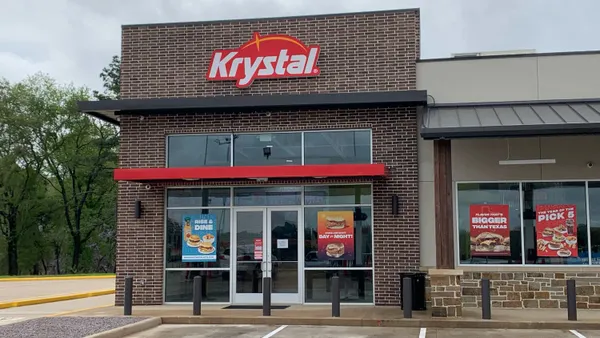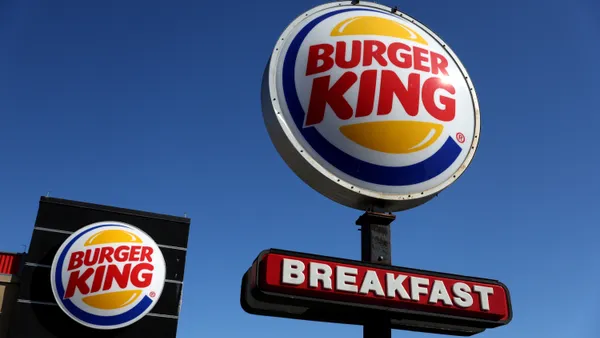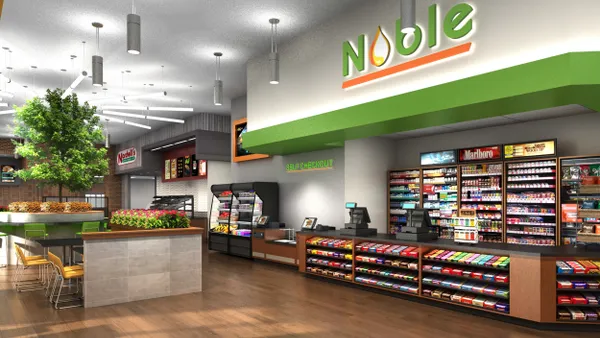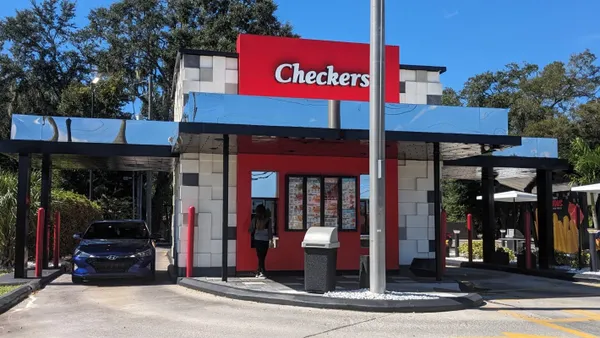Applebee’s has deployed a three-part plan for its development. This approach involves reviewing store performance, converting second-generation spaces and developing a “smarter, more efficient design” that will be revealed next year, Dine Brands CEO John Peyton said on the company’s Q2 earnings call.
Under Applebee’s President Tony Moralejo, who joined the brand in January, the company has been more focused on development and making Applebee’s more financially appealing to franchisees. Franchisees have been experiencing high land and construction costs and pressure on operating margins, Moralejo previously told Restaurant Dive. Earlier this year, the company began testing a new kitchen prototype that includes a conveyor belt oven and a combi oven, which uses convection and steam to batch cook.
Despite franchisees struggling financially, sales volume has improved with average unit volumes approaching $3 million during the last quarter, Peyton said. Sales will likely only continue to improve in the years to come, especially as the brand reaches net positive openings.
“Applebee’s competes in an increasingly competitive segment of the restaurant space and it continues to lead in value, affordability, and brand awareness,” Peyton said. “These are attributes that have been built and nurtured over the past decade and underpin the brand’s resilience and ongoing appeal to its loyal guests.”
Closing, relocating stores
Dine Brands has closed some underperforming Applebee’s restaurants, Peyton said, including older units in areas that are no longer sustainable because of the changing area consumer dynamics following the pandemic. Some of the closures also are due to franchisees unable to renew their leases, Applebee’s President Tony Moralejo said. However, the company is looking to relocate some of these restaurants to better markets.
This strategy has led to 25 to 35 net fewer locations this year, compared to its original expectation of 10 to 20 net fewer locations, Dine Brands CFO Vance Chang said during an investor call.
“Closing these underperforming restaurants opens up new trade areas,” Moralejo said. “It opens up opportunities for growth especially when you consider our broader development strategy.”
The brand had 1,667 units at the end of the first half of this year compared to 1,674 in the year ago period.
Space conversions
Redeveloping second-generation spaces can help Applebee’s manage costs, which is especially pertinent now that the cost of building a new store is up 30% to 40% today compared to 2019, Peyton said.
“Applebee’s, of our three brands, is the most complicated restaurant [to build],” the CEO said. “It’s got a more elaborate back of house and it’s got more built out because of the bar in front of house.”
A conversion can be done for $1 million to $1.5 million, Peyton said, compared to building costs as high as $4 million.
With Moralejo in place since January and Russ Sumrall appointed head of development in May, the chain has leadership with decades of development experience in place. Peyton said this team has been helping franchisees find ideal conversion sites.
Sumrall, who worked in development at Church’s Texas Chicken for several years, has been traveling the country to help find markets that would be suitable for the chain.
Instead of waiting for franchisees to bring second-generation opportunities to corporate management as it did years ago, Peyton said corporate is bringing these opportunities to franchisees.
Conversions have been particularly successful in generating strong profits. Average unit volumes for the class of 2022 openings are annualizing at nearly $4 million compared to the brand average of about $3 million, Peyton said, adding that this reflects “the compelling relevance of the brand when it’s in the right market.”
New restaurant designs
Applebee’s is in the process of developing a new store prototype as well to improve return on investments for franchisees, Peyton said.
“We’ve got a great prototype at the moment with a beautiful design and a wonderful decor,” Peyton said. “And we’re working aggressively to bring down the cost … and bring it to market next year.”
But Peyton said it was too soon to provide more details, adding that everything is on the table in terms of new elements for back- and front-of-house.
“This prototype will incorporate the post-pandemic business model and operations efficiencies and will address the inflation in the cost to build a new restaurant,” Peyton said.














